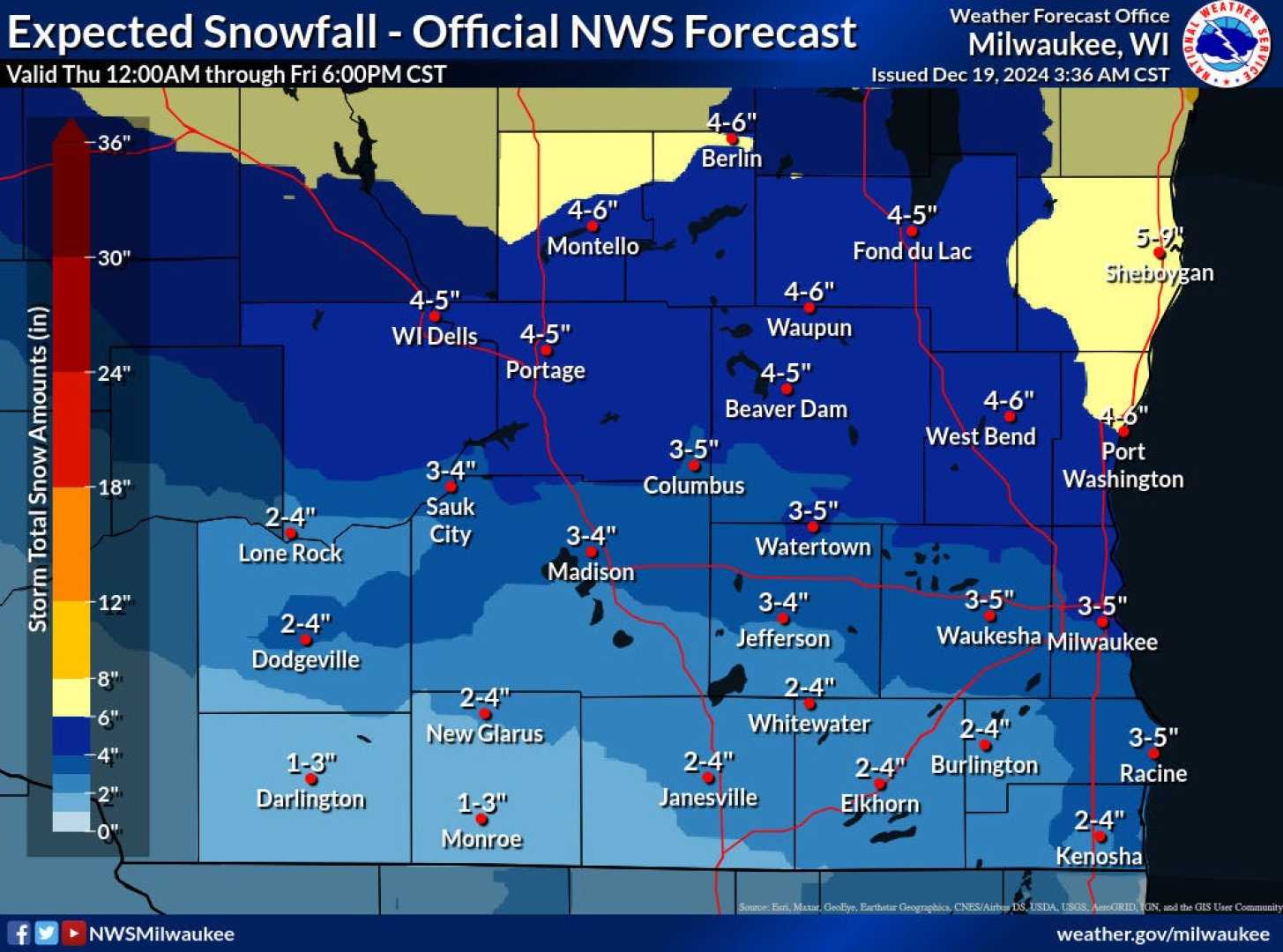News
Lake-Effect Snow Slows Milwaukee Commute, Up to 10 Inches Expected

Drivers traveling from Milwaukee south through Kenosha should expect a slower morning commute due to heavy lake-effect snow, according to the National Weather Service (NWS). The snowstorm, impacting eastern Milwaukee, Racine, and Kenosha counties, has already left up to four inches of snow in Kenosha as of 7 a.m. Monday, with totals potentially reaching 10 inches in some areas by early afternoon.
NWS meteorologist Ben Sheppard reported that Milwaukee is seeing a dusting to one inch of snow as of 6 a.m., with an additional four inches expected later in the day. A Winter Weather Advisory remains in effect for the region until 4 p.m., with highs in the mid-20s and overnight lows around 12 degrees.
Lake-effect snow occurs when cold air moves across the unfrozen waters of the Great Lakes, including Lake Michigan. As the air passes over the lake, it picks up warmth and moisture, forming clouds that produce narrow bands of heavy snowfall. These bands can drop two to three inches of snow per hour, with localized accumulations varying significantly over short distances.
Sheppard noted that low-level northeasterly winds are expected to intensify, bringing more lake-effect snow to southeastern Wisconsin. Areas like Cudahy, St. Francis, and Oak Creek may see moderate snowfall if the snow band shifts westward. Visibility could drop to one mile in some areas, with gusty winds of 20-30 mph causing blowing snow and reduced visibility.
The NWS has extended the Winter Weather Advisory to include Milwaukee County, though most of the county will likely miss the heaviest snowfall. However, lakeside areas in Milwaukee and points south could see 1-3 inches, with localized amounts of 3-6 inches or more in Racine and Kenosha counties.
Cold weather is expected to persist throughout the week, with highs in the 20s and lows in the teens. Residents are advised to check for road closures and travel cautiously. For the latest updates, visit the NWS website or local traffic authorities.












